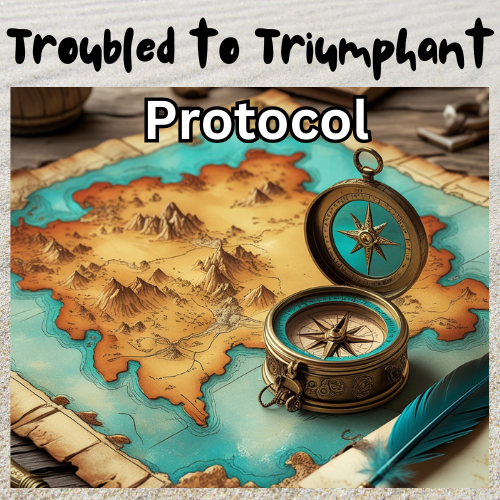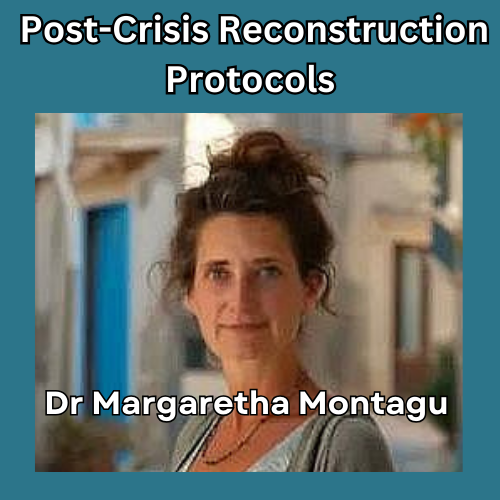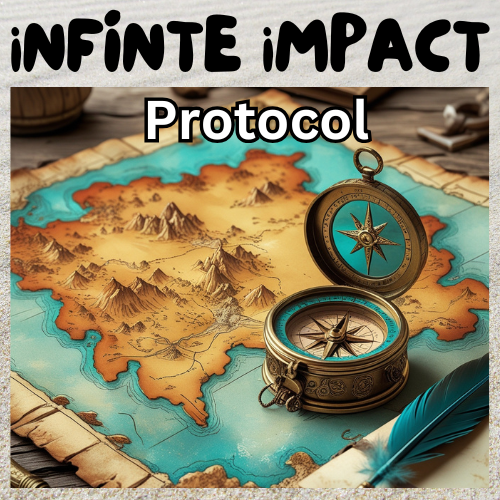“But patience can’t be acquired overnight. It’s just like building up a muscle. Every day you need to work on it, to push its limits.” —Eknath Easwaran
From my “Patience and Perseverance Quotes” article
I have diligently been working on building my patience muscle since the pandemic, a major life change, if there ever was one. It’s a slow process, a one-step-forward, two-steps-back lack of progress. Very frustrating. But I am better at it than I had been, though not much.
Everywhere I look, there’s an expectation for instant results—whether it’s instant coffee, instant messaging, or instant gratification. Yet here I am, fighting the urge to hit the fast-forward button on life, knowing deep down that sometimes the best ideas need to be cooked over a slow fire.
When I give myself time to think things over and let ideas marinate, instead of jumping off the cliff and hoping I’ll grow wings on the way down, the results are far more enriching and more rewarding than any quick fix ever could be. It’s like brewing a perfect cup of coffee; rushing it just leaves you with lukewarm disappointment, but letting it steep delivers a full-bodied, profoundly satisfying experience. In the end, patience isn’t about missing out—it’s about making 100% sure you are on the right path. Or pilgrimage.
I. The Power of Waiting: Why Patience Is the Ultimate Competitive Advantage
A decade ago, an ambitious CEO made a radical decision—he refused to launch a groundbreaking product until his team had time to refine every last detail. Investors panicked. Competitors scoffed. The media predicted disaster. But when the product finally debuted, it didn’t just succeed; it reshaped an entire industry. Sometimes, doing nothing—strategically—yields more power than acting in haste.
We live in a world that worships speed. Faster deals, instant results, rapid turnarounds—success is often measured by how quickly one moves from point A to B. But what if this obsession with immediacy is actually undermining real progress? What if the most successful leaders, the most innovative thinkers, and the most fulfilled people share a secret weapon that runs counter to the breakneck pace of modern ambition?
Here’s the truth: patience isn’t about passivity or delay. It’s about playing the long game with precision. It’s a strategic asset—one that fuels creativity, sharpens decision-making, and unlocks opportunities that impulsive action often misses. Whether navigating a career pivot, steering a business through uncertain waters, or reimagining personal purpose, those who master the art of patience position themselves ahead of the curve.
So I ask myself, what if waiting isn’t a liability—but your greatest competitive advantage?
II. The Changing Landscape of Success
In today’s fast-paced world, the traditional markers of success—rapid execution and immediate returns—are getting a thoughtful makeover. Once, the business mantra was all about racing to the finish line. But now, more and more leaders realise that true success isn’t measured by how quickly you move, but by the depth and durability of your achievements.
Take a moment to consider how industries, like technology and finance, have shifted their focus. Instead of chasing every fleeting trend, trailblazing companies are betting on long-term vision. They’re investing in research, nurturing innovation over time, and building strategies that aren’t just about a quick win but about lasting impact. Think of it as crafting a gourmet meal rather than grabbing a fast-food snack—the slow simmer brings out richer, more complex flavours.
This change isn’t just a gentle evolution; it’s a radical rethinking of what success should look like. The old-school obsession with speed and instant ROI is giving way to an appreciation for the kind of strategic patience that builds robust, sustainable growth. This new approach disrupts the conventional norms and, quite frankly, challenges the hustle culture that has dominated for so long. When you choose to wait and let your ideas mature, you’re not being indecisive—you’re creating space for genuine innovation to blossom.
III. The Science and Evidence Behind Patience
If you’re still on the fence about the merits of patience, science has plenty to say. Research in psychology and neuroscience shows that the ability to delay gratification is linked to better decision-making, increased creativity, and even lower stress levels. Studies have repeatedly demonstrated that when we give ourselves time to think and plan, our brains engage the prefrontal cortex—the region responsible for strategic thinking and impulse control. In short, patience helps us make smarter, more informed choices.
One famous set of experiments—the so-called “Marshmallow Test”—illustrated this beautifully. In these studies, children who resisted the immediate lure of a treat in hopes of a bigger reward later ended up faring better in various life outcomes. This simple test underscores a profound truth: the capacity for patience can set the stage for long-term success. It’s not about denying yourself pleasure but about making choices that pay off in the long run.
But it’s not just about academic studies. Real-world data consistently backs up the benefits of a patient approach. Consider the savvy investors and visionary entrepreneurs who deliberately take their time to assess risks and opportunities. Their success stories often reveal a pattern: those who resist the urge to act impulsively tend to build more resilient businesses and make more effective decisions. They’re less likely to be swept away by market volatility and more likely to spot opportunities others miss.
By bridging theory and practice, we see that the science of patience isn’t just a collection of abstract ideas—it translates directly into tangible, everyday benefits. For example, an executive facing a major investment decision might find that stepping back to weigh all the options leads to more nuanced strategies and a better allocation of resources. Similarly, in the creative realm, waiting for the right moment can spark innovative breakthroughs that wouldn’t have emerged under the pressure of immediate deadlines.
Together, these insights create a compelling case: patience is far from being a passive act of waiting. It’s a dynamic, evidence-backed strategy that transforms decision-making, fuels creativity, and ultimately leads to more sustainable success. In an environment that often prizes speed, the true innovators are those who understand that the best results often come from letting time work in their favour.
IV. Examples and Case Studies
Not every success story is a sprint to the finish line—sometimes it’s more like a slow marathon where the path itself reveals unexpected rewards. Take Warren Buffett, for instance. While many investors rush to grab the hottest stock, Buffett waits patiently for the right opportunities. His steadfast approach has turned market fluctuations into long-term gains, proving that letting investments mature often beats chasing the latest fad.
“The stock market is a device to transfer money from the ‘impatient’ to the ‘patient’.” Warren Buffett, Chairman, Berkshire Hathaway
Then there’s Netflix. Originally known as a DVD rental service, Netflix didn’t jump on the streaming bandwagon overnight. Instead, it patiently invested in technology and content, slowly but surely transforming itself into the streaming giant we know today. While some competitors leapt into new markets only to trip over-hasty decisions, Netflix’s measured transition allowed it to redefine how we watch TV—and the binge-watching revolution was a win worth waiting for.
These examples challenge the idea that speed is the only route to success. Instead, they inspire us to rethink our approach, showing that when you let the details simmer, you often end up with a richer, more sustainable outcome. Who knew that sometimes the secret to winning the race was simply taking regular pit stops?
V. The Art and Science of Cultivating Patience
So, how does one develop this seemingly elusive superpower? The good news is that patience isn’t just an inborn trait—it can be cultivated with a bit of practice and the right tools. First off, consider incorporating mindfulness practices into your daily routine. A few minutes of deep breathing or a quick meditation session can help clear your mind and slow down the frantic pace of decision-making.
Next, try structured decision-making frameworks. Breaking down big choices into smaller, digestible steps can transform an overwhelming decision into a manageable process. Think of it as building a Lego set—each piece adds up to a complete picture when given the proper time and care.
And don’t overlook the power of practical tools. Apps like Headspace and Calm can guide you through mindfulness exercises, while books like Daniel Kahneman’s Thinking, Fast and Slow offer deep dives into how our brains work when we opt to pause before acting. For those who prefer a more hands-on approach, leadership retreats and workshops that focus on strategic planning can provide an ideal environment to hone your patience skills.
These strategies aren’t about putting your progress on hold—they’re about ensuring every move is deliberate and well-considered. By integrating these techniques, you enhance the quality of your decisions, paving the way for sustained, innovative success without sacrificing momentum.
VI. The Paradox: Patience as a Catalyst for Innovation
Here’s a twist that might surprise you: sometimes, waiting can actually light the fuse for creative breakthroughs. It’s the classic case of “good things come to those who wait”—only here, waiting isn’t about idle inactivity but a strategic pause that lets innovation percolate.
Picture it like this: you’re cooking a gourmet meal. Rushing might get you a quick snack, but letting those ingredients simmer together results in a flavour explosion that’s hard to beat. In the business world, giving yourself a moment to step back, reassess, and let ideas marinate can lead to a well-rounded solution that you’d never have stumbled upon in the rush.
Finding the balance between seizing an opportunity and pausing to evaluate is the real art. And while our culture often champions the “act now” mentality, a measured pause can be the ultimate power move, debunking the myth that rapid action always leads to success.
So next time you’re tempted to dive headfirst into a decision, consider giving yourself permission to wait. Who knows? That little delay might just be the secret ingredient that transforms a good idea into something truly extraordinary.
VII. Overcoming the Cultural Bias Against Patience
In today’s world, everything seems to be on fast-forward. From one-click shopping to same-day deliveries and real-time social media updates, the allure of instant gratification is hard to resist. This culture of immediacy permeates our professional lives too, where the pressure to deliver quick wins can often overshadow the benefits of a well-timed pause.
But here’s the twist: as markets grow more volatile and complex, the luxury of patience is emerging as a genuine competitive advantage. In an environment where rapid shifts and unforeseen challenges are the norm, taking a step back to assess and adapt isn’t just wise—it’s essential. When everyone else is scrambling to be the first mover, the thoughtful strategist who waits and watches can often spot the opportunities that the rush misses.
By challenging the status quo, we start to see that success isn’t solely defined by speed. Rethinking our approach to achievement means recognising that patience is not a passive state, but an active, innovative force that can redefine what it means to be successful in today’s fast-paced world.
VIII. Practical Applications for Successful Professionals
For those at the helm of finance, tech, or entrepreneurship, the art of patience isn’t just a nice-to-have—it’s a strategic necessity. Consider the savvy investor who meticulously researches market trends rather than succumbing to every hot tip, or the tech innovator who tests and refines a product before a grand launch, ensuring it’s built to last rather than just built to impress.
Here are some actionable takeaways you can start using right away:
- Set Long-Term Goals: Break your major ambitions into a series of smaller, achievable steps. This not only makes big projects less daunting but also provides a clear roadmap to success.
- Develop a Strategic Pause: Before jumping into a decision, give yourself a moment to reflect. A structured pause can help you evaluate all angles and potential outcomes, leading to more thoughtful choices.
- Cultivate a Mindful Routine: Integrate mindfulness practices into your day—whether that’s a brief meditation session or a quiet moment with a cup of coffee. These small practices can sharpen your focus and enhance your decision-making.
- Use the Right Tools: From strategic planning workshops to apps like Headspace and Calm, invest in tools that help you develop and maintain a patient mindset.
Having patience isn’t about delaying progress; it’s about empowering yourself to make choices that align with sustained success and continuous innovation. When you choose to be patient, you’re not only reducing the risk of hasty mistakes but also laying the foundation for smarter investments and more resilient growth.
IX. Final Thoughts
To wrap things up, remember that patience isn’t merely a passive state of waiting—it’s a dynamic, proactive strategy that fuels innovation, sharpens decision-making, and transforms life’s challenges into exciting opportunities. We’ve explored how stepping away from the constant rush can lead to breakthroughs in both personal and professional realms, challenging the conventional wisdom that equates speed with success.
By rethinking our approach and embracing the art of a well-timed pause, you open the door to a richer, more sustainable form of achievement. So, why not experiment with these strategies, adopt a patient mindset, and share your journey? Not only will you be contributing to a broader shift in how we define success, but you’ll also be setting yourself up for deeper, more meaningful accomplishments.
In a world obsessed with quick fixes, let’s dare to remember that sometimes, the best moves are the ones made after a thoughtful pause. Who knew that patiently waiting would be your secret weapon in a fast-paced race?
X. Put Patience into Practice
Walking the Camino de Santiago during one of my retreats is like hitting the pause button on life’s hectic pace. With every step along this ancient route, I’ve learned that patience isn’t just a waiting game—it’s an active, soulful practice. The journey forces you to slow down, savor the stunning views, and engage with fellow travellers who share their own unique stories. It’s in these moments, as you meander along winding trails and embrace the unpredictable rhythm of the path, that you realize true progress is measured in mindful steps rather than frantic sprints. This pilgrimage doesn’t just guide you to a destination—it teaches you to appreciate the beauty of the journey itself, one deliberate stride at a time. So why not take a break from the chaos and step into a world where every footstep counts? Join me on the Camino retreat and unlock the transformative power of patience—your journey to a more balanced, enriched life starts here.
Find out more:
Hit the pause button and regain your footing during a From Troubled to Triumphant Retreat. Imagine walking a peaceful stretch of the Camino de Santiago, where every step helps untangle the mental clutter or spending time with gentle Friesian horses who teach you the art of mindfulness. Whether you choose to make a change or are forced to, this retreat offers the perfect blend of peace, perspective, and playful exploration to help you rise from troubled to triumphant!


“I am an experienced medical doctor – MBChB, MRCGP, NLP master pract cert, Transformational Life Coach (dip.) Life Story Coach (cert.) Stress Counselling (cert.) Med Hypnotherapy (dip.) and EAGALA (cert.) I may have an impressive number of letters after my name, and more than three decades of professional experience, but what qualifies me to excel at what I do is my intuitive understanding of my clients’ difficulties and my extensive personal experience of managing major life changes using strategies I developed over many years.” Dr M Montagu
Get rid of the nagging emptiness of “Is this all there is?” and step into a life where your accomplishments feel as purposeful, meaningful and fulfilling as they are impressive. This unique mentoring program empowers you to unearth the mission that sets your soul on fire and aligns your life with what truly matters to you—beyond success metrics and societal expectations.

Further Reading
- “The Art and Science of Patience” by Jackie Williams – This book offers insights on living a more patient life and its benefits for wellbeing.
- “Four Reasons to Cultivate Patience” by Kira M. Newman (Greater Good Science Center, 2016) – This article discusses research on the benefits of patience, including improved mental health and goal achievement.
- “Patience and Mental Health in Iranian Students” (Besharat et al., 2015) – This study examined the relationship between patience and mental health, finding that patience is associated with higher levels of life satisfaction and lower levels of depression and anxiety. Aghababaei N, Tabik MT. Patience and Mental Health in Iranian Students. Iran J Psychiatry Behav Sci. 2015 Sep;9(3):e1252.
- Research by Sarah Schnitker (2012) – This study refined the understanding of patience types (interpersonal, life hardship, and daily hassles) and their relationships with hope, life satisfaction, and goal achievement. Juliette L. Ratchford & Sarah A. Schnitker. (2024) Virtue in Pursuit of Goals: A Goals-Based Approach to Patience Measurement. Journal of Personality Assessment 106:2, pages 181-195.
- “Investigation of Patience Tendency Levels in Terms of Self-Determination, Self-Compassion and Personality Features” (Eliüşük & Arslan) – This study found positive relationships between patience and self-compassion, exploring patience’s connections with personality traits.
- Jennifer Shubert, Juliette L. Ratchford, Benjamin J. Houltberg & Sarah A. Schnitker. (2022) “Disentangling character strengths from developmental competencies: The virtue of patience and self-regulatory competencies.” The Journal of Positive Psychology 17:2, pages 203-209.
- Timothy Pawl, Juliette L. Ratchford & Sarah A. Schnitker. (2021) “Growth in patience in Christian Moral Wisdom and contemporary positive psychology.” Journal of Beliefs & Values 42:3, pages 333-347.
















Comments are closed.